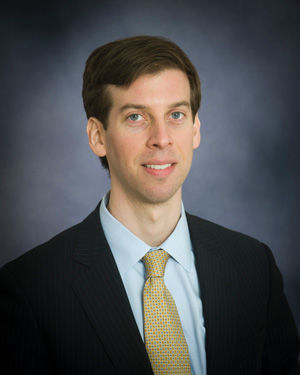Anti-Semitism and the myth of misbehaving teenagers
Published May 11, 2017
The vandalism at the Chesed Shel Emeth Cemetery in University City in February took place just a mile from our home. And yet, it seemed so distant, both in time and place.
The destruction of Jewish headstones and gravestones evoked thoughts of the Eastern Europe that my ancestors fled many generations ago; not present-day St. Louis. Being Jewish and observing Jewish holidays and traditions, I understand the disease of anti-Semitism that has followed and pursued the Jewish people across generations and geographies. But this understanding was always from a historical perspective, rather than from a first-hand experience.
To my knowledge, I never experienced anti-Semitism, first-hand. I never felt targeted or mistreated for being Jewish. Among my friends and community members, being Jewish was a part of my identity, but it was not a foundation for fear. This was the United States after all: a melting-pot of religious, ethnic and racial diversity.
In other words, the spate of recent attacks and threats against Jewish institutions is something that I have not seen in my lifetime. And I do not seem alone. Other community members, reflecting on decades of history, cannot recall a similar outbreak of anti-Semitic threats and vandalism.
Mark Potok, a senior fellow at the Southern Poverty Law Center, echoed these sentiments, stating that he had not seen anything like this in his more than 20 years at the organization.
After the vandalism at the Chesed Shel Emeth Cemetery, Jewish cemeteries in Philadelphia and Rochester were targeted. After the vandalism at the Chesed Shel Emeth Cemetery, 31 bomb threats were called into various Jewish community centers around the country, although a 19-year old Israeli-American is suspected of being behind the bulk of the threats.
The Anti-Defamation League recently reported that anti-Semitic incidents in the United States rose by more than one-third in 2016. The organization’s annual Audit of Anti-Semitic Incidents, released in late April, reported a total of 1,266 incidents (including assaults, vandalism and harassment) during 2016. Almost a third of those occurred in November and December.
All of this is, quite obviously, deeply troubling and upsetting. But the ease with which a few individuals, using various technologies, can anonymously telephone and target institutions makes these threats at least comprehensible. There will always be the intolerant and hateful. They have always lived among us and always will. This is unfortunate, but it is, all the same, understandable.
What I cannot understand, however, is the utter reluctance of some — when repeatedly confronted with such acts of intolerance and hate — to dismiss and downplay these acts. After each cemetery was vandalized, the skeptics arose, calling for patience, calling for deliberation. This may not be anti-Semitism. This may not be a hate crime. This could just be teenagers. This could just be youthful indiscretion and intoxication. This could even be a false-flag attack.
In the face of three, successive cemetery attacks and dozens of bomb threats, these arguments are specious at best. But more troubling than the merits of these arguments is the message that it sends to the Jewish community. The message being one of disinterest and abandonment. Absent an arrest, we don’t believe you. Call us when there is a confession.
This is not community. Faced with a rash of burglaries, a neighbor does not tell a victimized homeowner that, just maybe, movers emptied the wrong house. Or accuse the homeowner of insurance fraud. The burden of brotherhood should not be so heavy.
These crimes are difficult to solve and, at last glance, investigators had nothing new to report. It is possible, then, that the individuals behind these crimes may never be discovered or caught. But that does not erase what happened. And in the absence of any arrest or confession, it is that much more important to destroy the myth of some misbehaving adolescent. This is all the more so because vandalism against Jewish cemeteries has long been one of the principal arrows in the anti-Semitic quiver. Barring an arrest in the case, those who cling to the notion of innocent unruliness are themselves guilty of perpetuating a dangerous myth.
Charles N. Insler is an attorney and resident of University City.
















